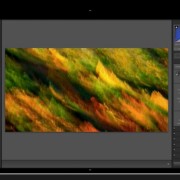3 Invaluable Lightroom Tips for Nature Photography
Establishing a solid Lightroom workflow for nature photography can enormously reduce the amount of time you spend sorting and processing your photos. We’ve all been there. You come home from a fantastic trip with a card full of thousands of images. Now comes the daunting task of separating the wheat from the chaff. Don’t waste energy processing images that should have been passed over, or become paralyzed because the enormity of the task overwhelms you. Here are three simple Lightroom tips that are big timesavers.
Lightroom Tip #1 – Develop Presets
Pay attention to how you develop your nature photos. There are probably adjustments that you make that are common to all your photos. So, make a custom Develop preset and apply it to all your images upon import. This is an enormous timesaver and one of my favorite Lightroom tips. For example, I routinely lift the shadows, recover some of the highlights, reduce contrast, and bump up the vibrancy slightly for nature photography. These settings are specific to my taste and my style, so starting out with a predefined preset saves me tons of time in processing.
Here’s how to develop new presets in Lightroom:
- Navigate to the Develop Module.
- Modify the any photo with the values you want in your preset.
- Adjust exposure, highlights, shadows, sharpness — whatever adjustment you want in your preset.
- When you’re satisfied with the adjustments, go to Develop > New Preset (or click on the + icon in the left panel Preset window).
- A window will pop up asking you which settings you want applied from your current image to your preset. Select which settings you want, then click “Create.”
You’ll notice that your new preset now appears in the Preset panel. You can now use your preset for to streamline your nature photography workflow. To apply your new Preset to all of your photos upon import, on the Import screen in the Library module, go to the Apply During Import section on the right panel. There’s a Develop Settings pull-down menu where you can select your develop preset. Your new preset will remain the default import setting.
Lightroom Tip #2 – Become Organized
Culling is the toughest job for many nature photographers. It can be enormously time-consuming to determine which images to delete and which images to flag for processing. Here’s one way to do it. Create a target collection and use it to group your best nature photos in one place.
- To do this, create an empty Collection Folder and name it whatever you want. I use something like the “Best of” with the location followed by the date.
- Right click on the folder and select Set as Target Collection.
- Then, as you go through your nature photography library, you can assign any photo to that target collection with one keystroke. Use “B” key (shortcut to assign an image to a target collection) and the “X” key (shortcut to mark an image for deletion later).
- I use the “X” key only for images that have some obvious flaw, like focus issues, sun flare, or unwanted movement. Those “X”’d images can be deleted later with a single command.
Once all your best nature photos are assigned to the collection, you can further cull these in the collection by reviewing each one and removing the weaker images. The “B” key can be used again, and in this case hitting the “B” key un-assigns an image from the collection. It’s okay to be brutal here because you are not actually deleting your photos, just removing them from the collection.
Finally, create your own system for rating your images. Lightroom has three ways to prioritize and sort images — flags, stars and colors. I’ve developed a three-star system for my nature photography. I assign one star for images that are good enough to warrant a second look. After I decide to process an image and have made further Lightroom adjustments to it, then I assign 2 stars to that image. And, finally, I upgrade the image to three stars after I’ve processed it in Photoshop. I don’t use the four or five star rating, nor do I use colors for sorting. Once I’m satisfied with the processing, I give the image a title. I put the name in the Title field for easy retrieval later.
If I need to select images for a specific project, such as an exhibit or an article, I use additional collections to group and cull further. I’m sure there are creative ways to use Lightroom’s filtering systems, so go ahead and create your own rating system.
Lightroom Tip #3 – Memorize essential the Keyboard Shortcuts
Move quickly between the Library and Develop modules, which are the two modules where I spend most my time.
- G for Library (or Grid) and D for Develop.
- The F key lets you view the current image in full screen mode.
- Shift + Tab will hide all of Lightroom’s side panels, leaving only your images on the screen. Or, L (for Lights out) will remove all distracting elements from the screen.
- Z to zoom in and out. Automatically set exposure, black, and white point by holding down the Shift key double clicking on the words “Blacks”, “Whites”, and “Exposure”.
For a complete list of shortcuts, hold down the Command + / to display the keyboard shortcut for that module.
While I have developed my own Lightroom editing process over the years, I’ve only covered a only three essential Lightroom tips in this article. You will find that in time you will develop your own favorite Lightroom tricks that will help you streamline your post processing workflow. Good luck.















